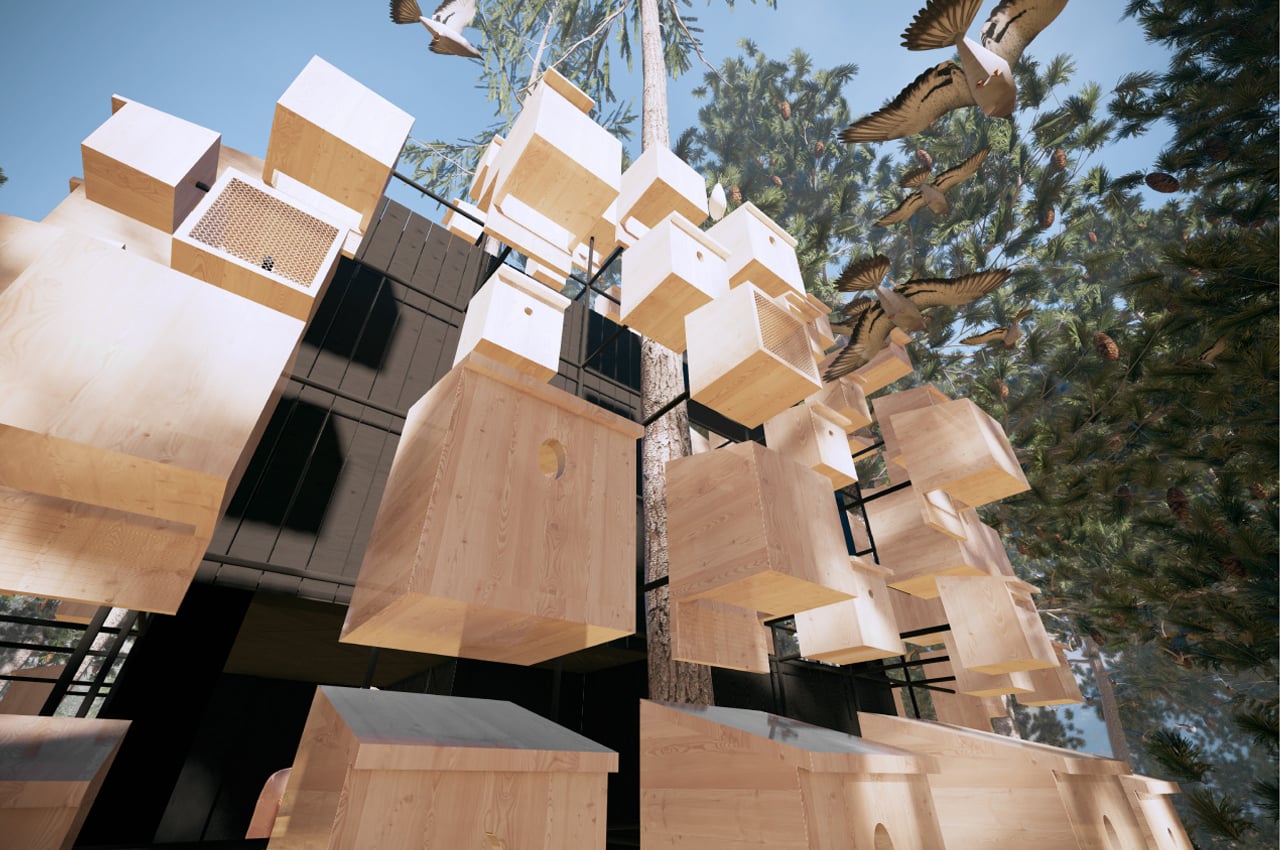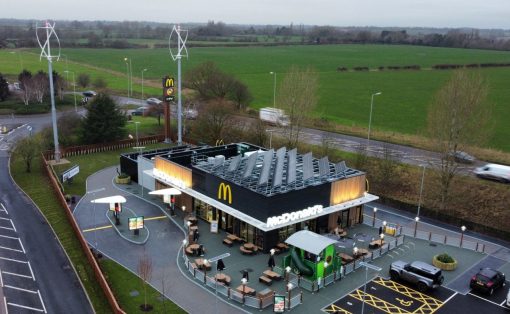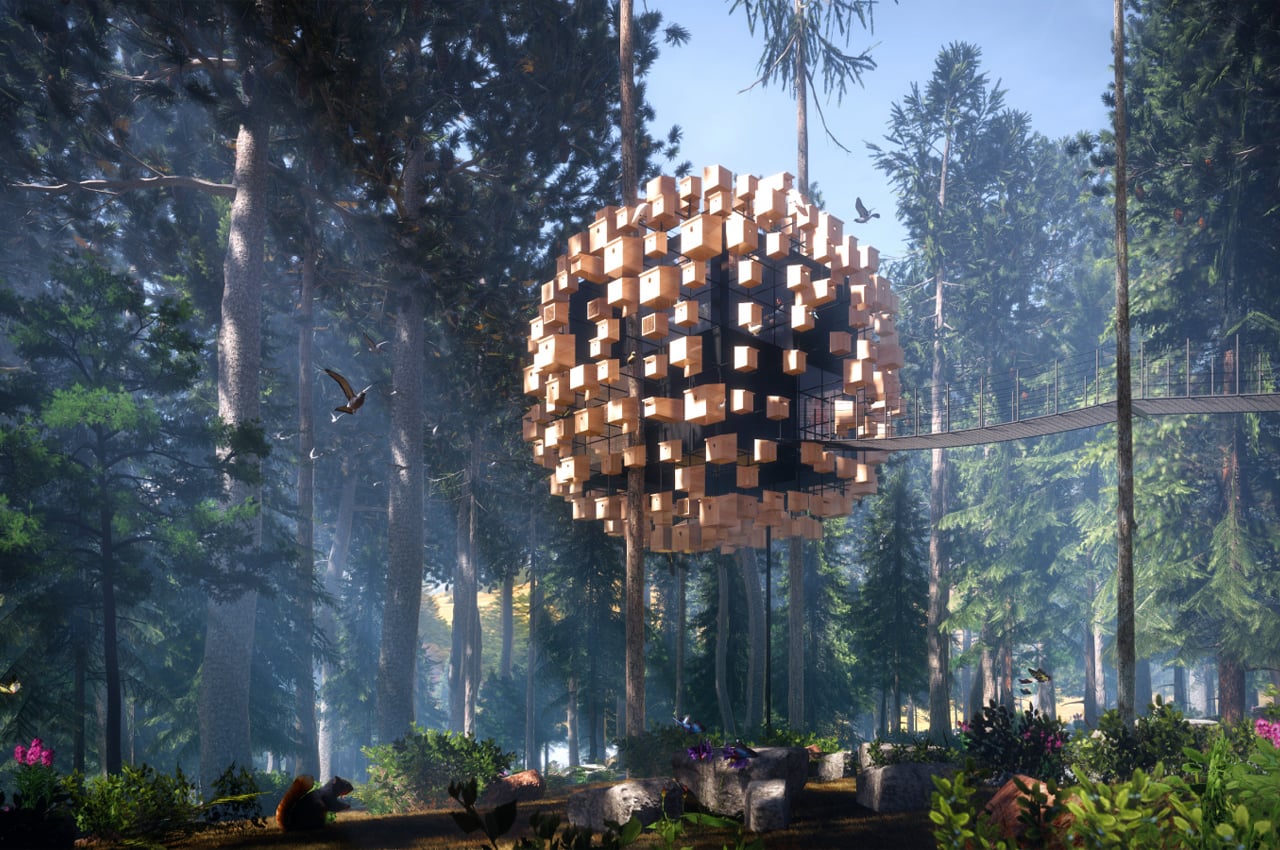
Sweden’s Treehotel introduces their latest hotel room which covers a 34m2 cubic living unit with 350 birdhouses to increase the region’s bird population and provide nesting sites during each breeding season.
The Treehotel in Swedish Lapland is Bjarke Ingels Group’s (BIG) immersive hospitality experience that creates unique hotel accommodations through a variety of cabins in the woods. Incorporating the local materials of wood and stone into the build of each cabin, the Treehotel units each react to the surrounding forest differently just like the trees and vegetation that provide the hotel’s backdrop.
Designer: Bjarke Ingels Group
In a recent collaboration with Swedish ornithologist Ulf Öhman, the Treehotel’s latest hotel room is called Biosphere for its spherical frame covered by 350 birdhouses to increase the region’s biodiversity and double as a bird habitat.
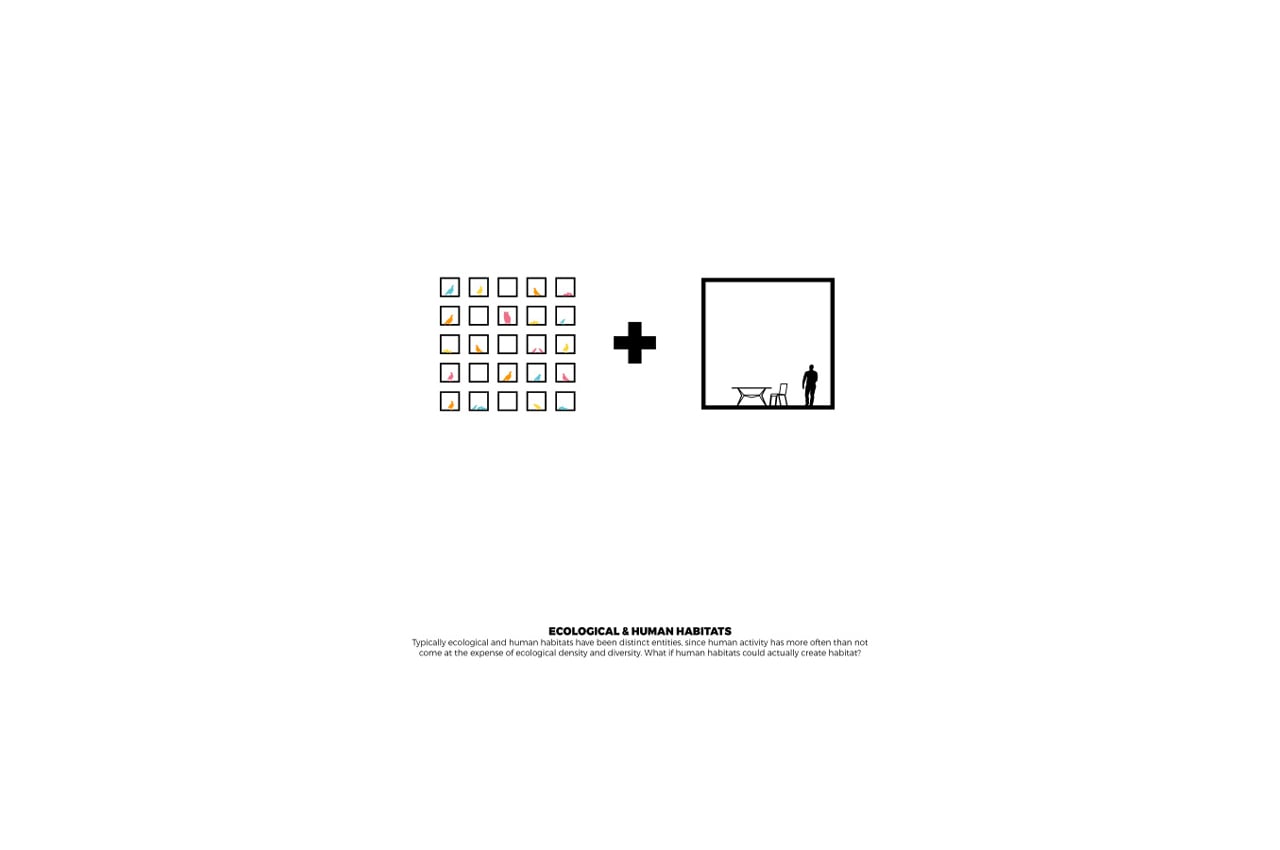
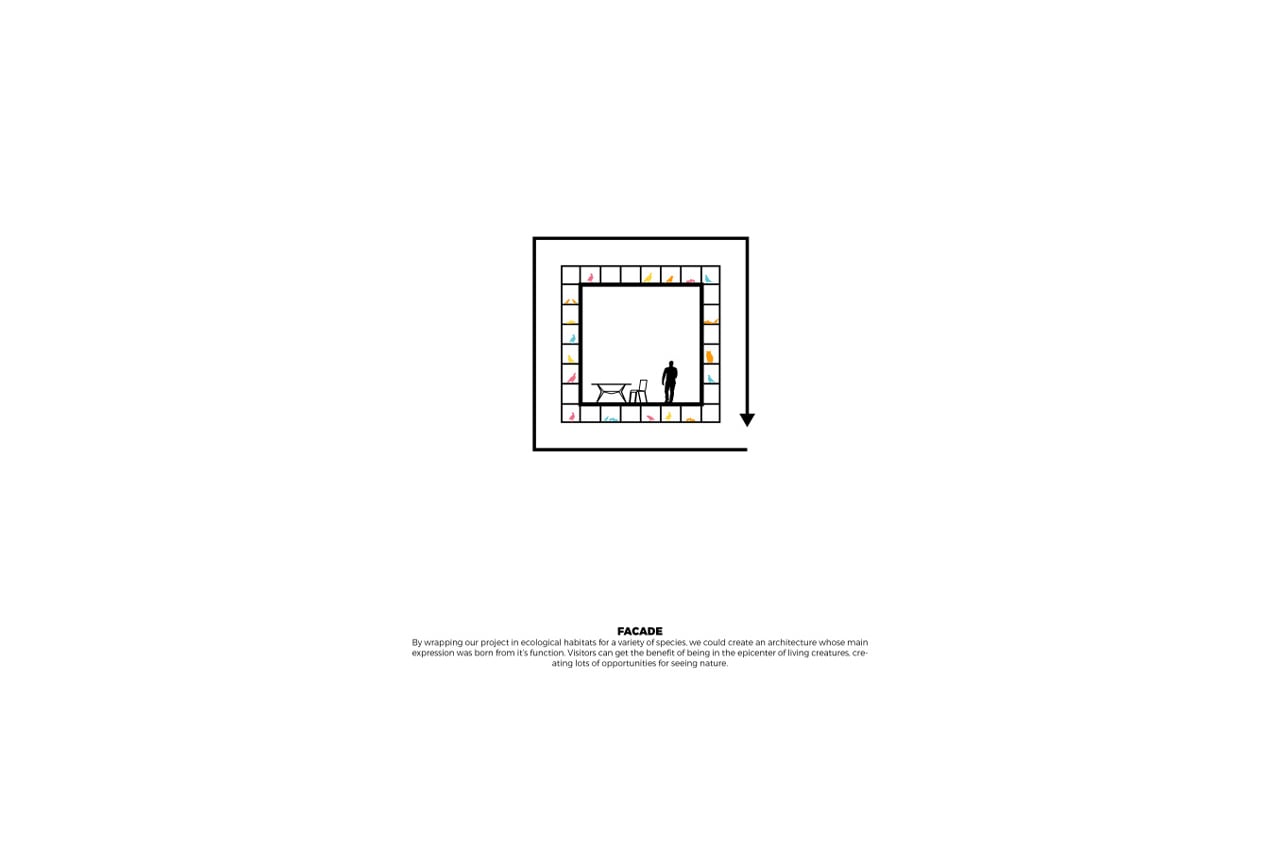
Suspended amidst the pines of Sweden’s Harads locality, Biosphere is the eighth hotel room on the property. The interior of each 34m2 hotel unit can be accessed via a suspension bridge that slopes from the ground floor up to the Treehotel’s units. While the interiors are described as “simple and pragmatic,” dark elements and organic materials help the units feel as cozy as a nest.
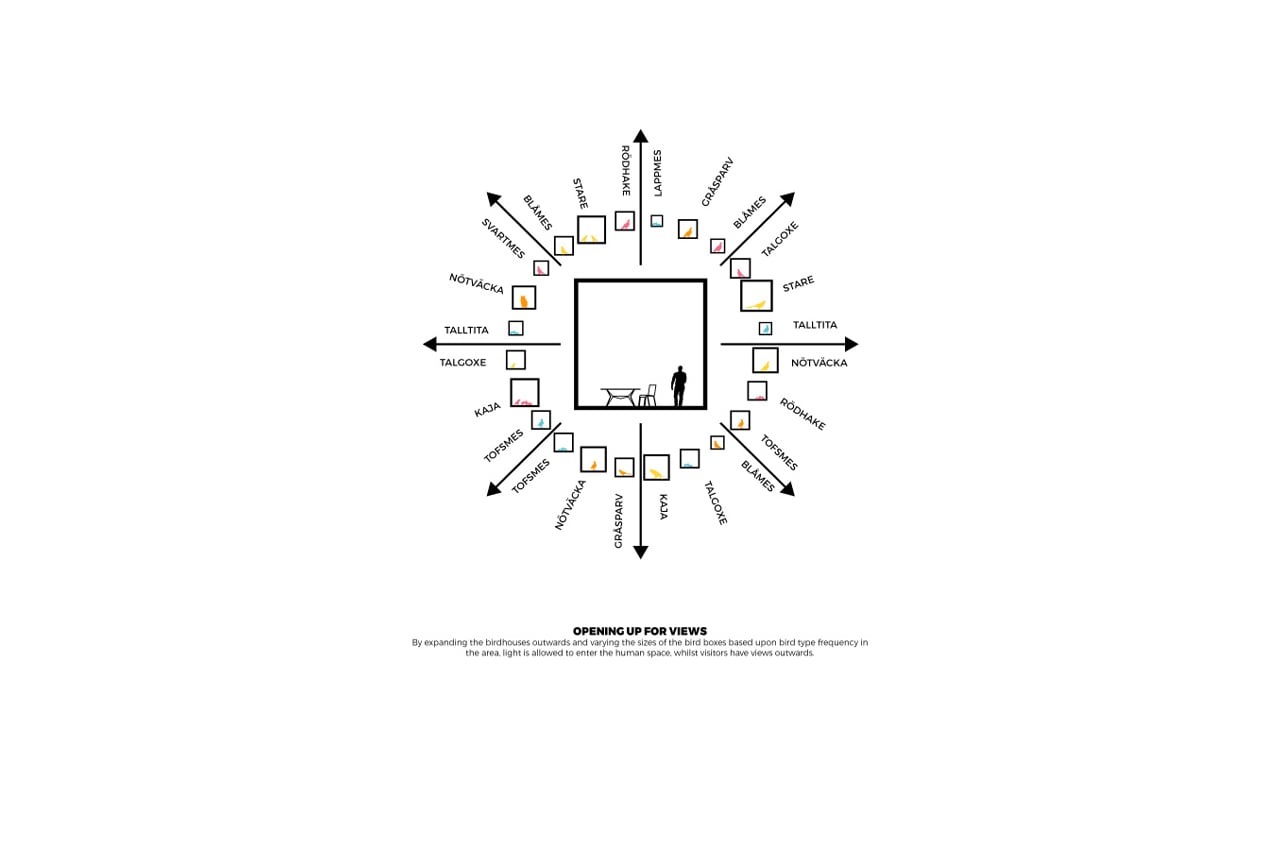
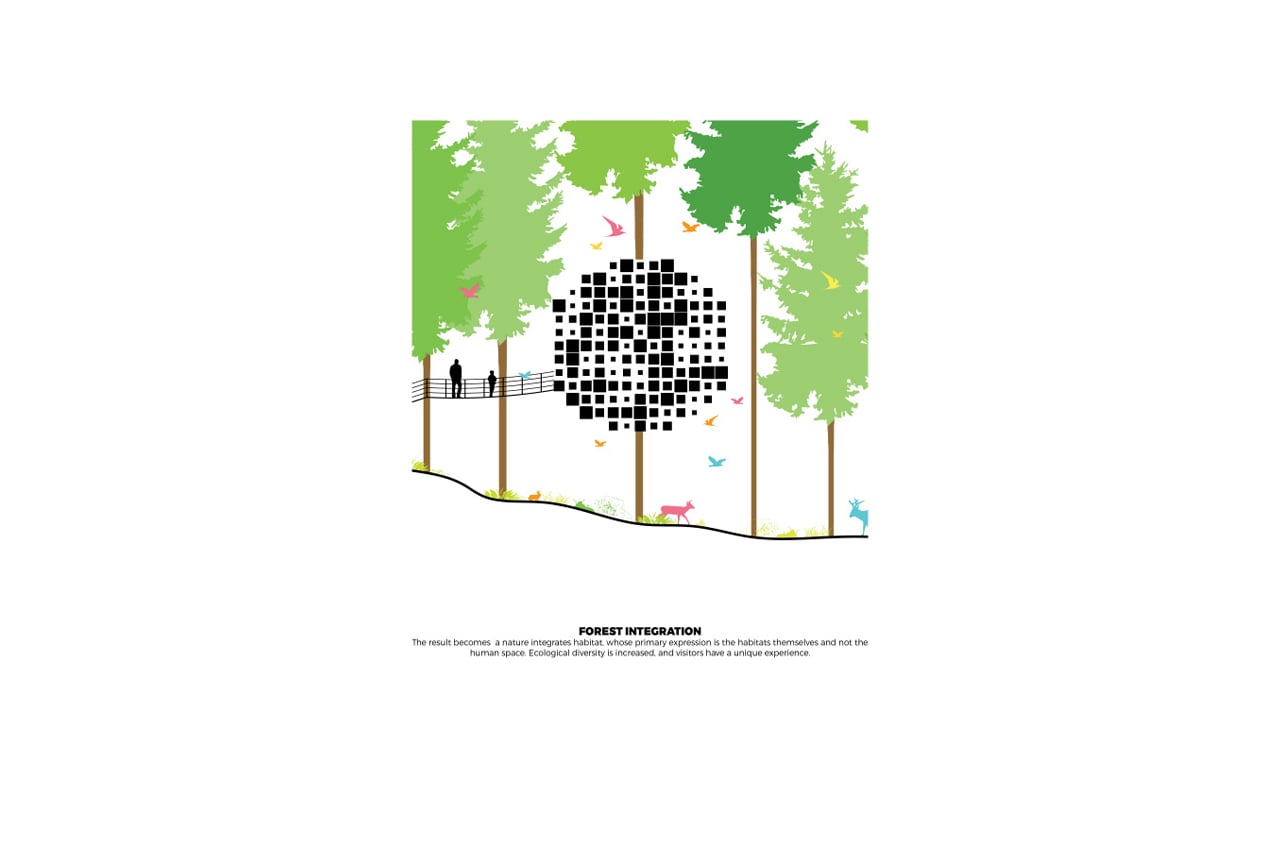
Visitors can also access a panoramic vista point on the roof terrace that completely opens up to the surrounding forest. As the architects behind Biosphere put it, “Surrounded by subtle bird song–balanced by the exterior triple-glazing facade–guests are provided with an intimate, immersive nature experience.”
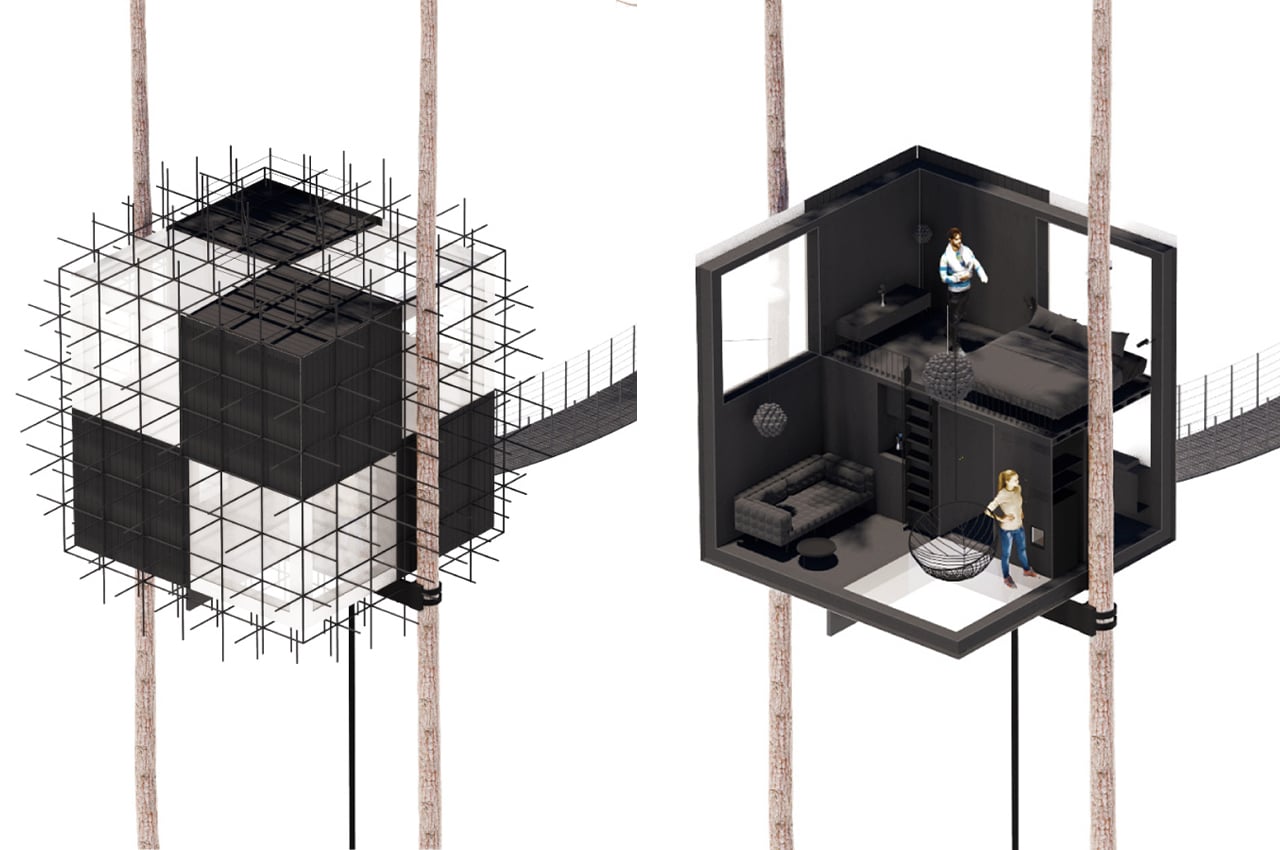
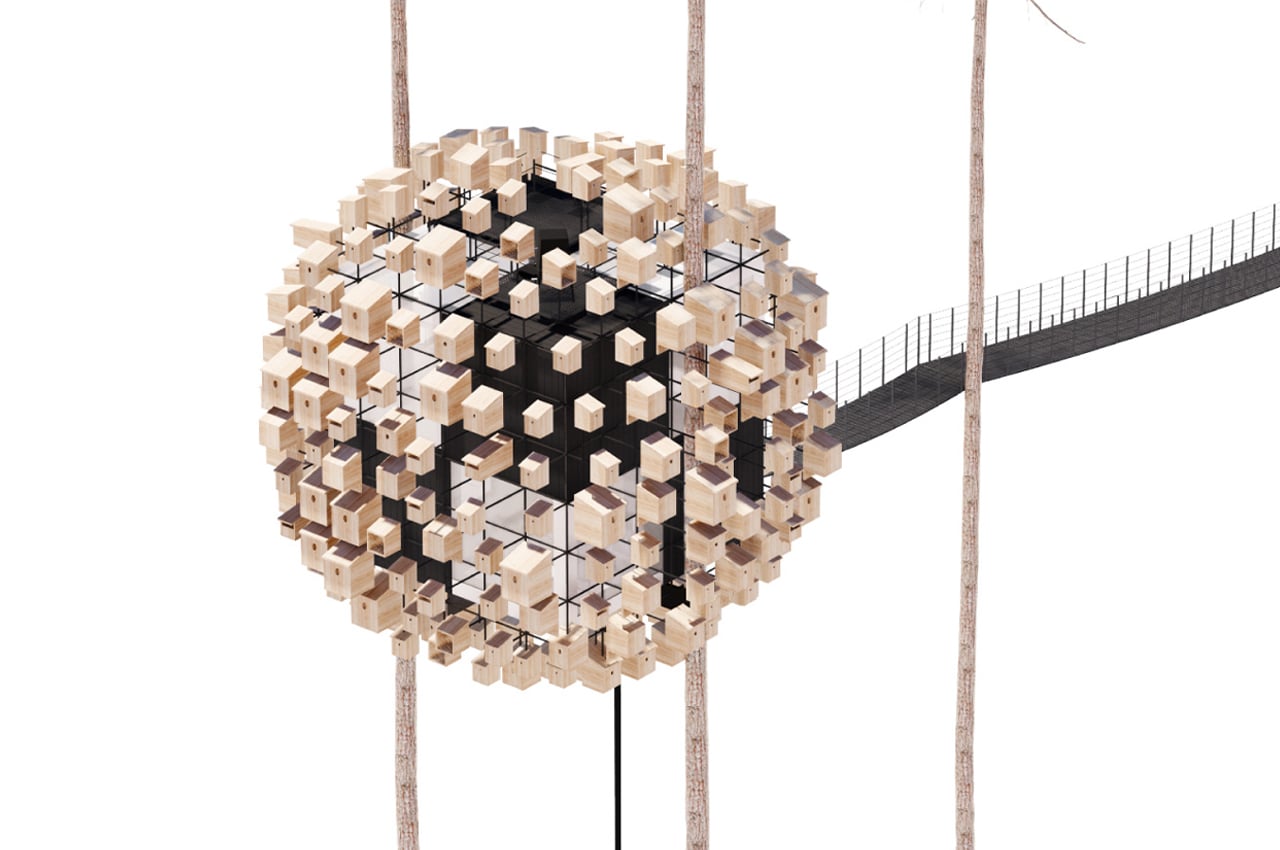
The birdhouses that envelop the cubic living units were incorporated into the design in an attempt enhance the surrounding biosphere, with the aim being to decrease the downward trend of the local bird population in the surrounding Swedish woods and strengthen the rich biodiversity of the region. Working closely with Öhman enlightened Treehotel’s architects on the region’s bird population and how to help conserve it.
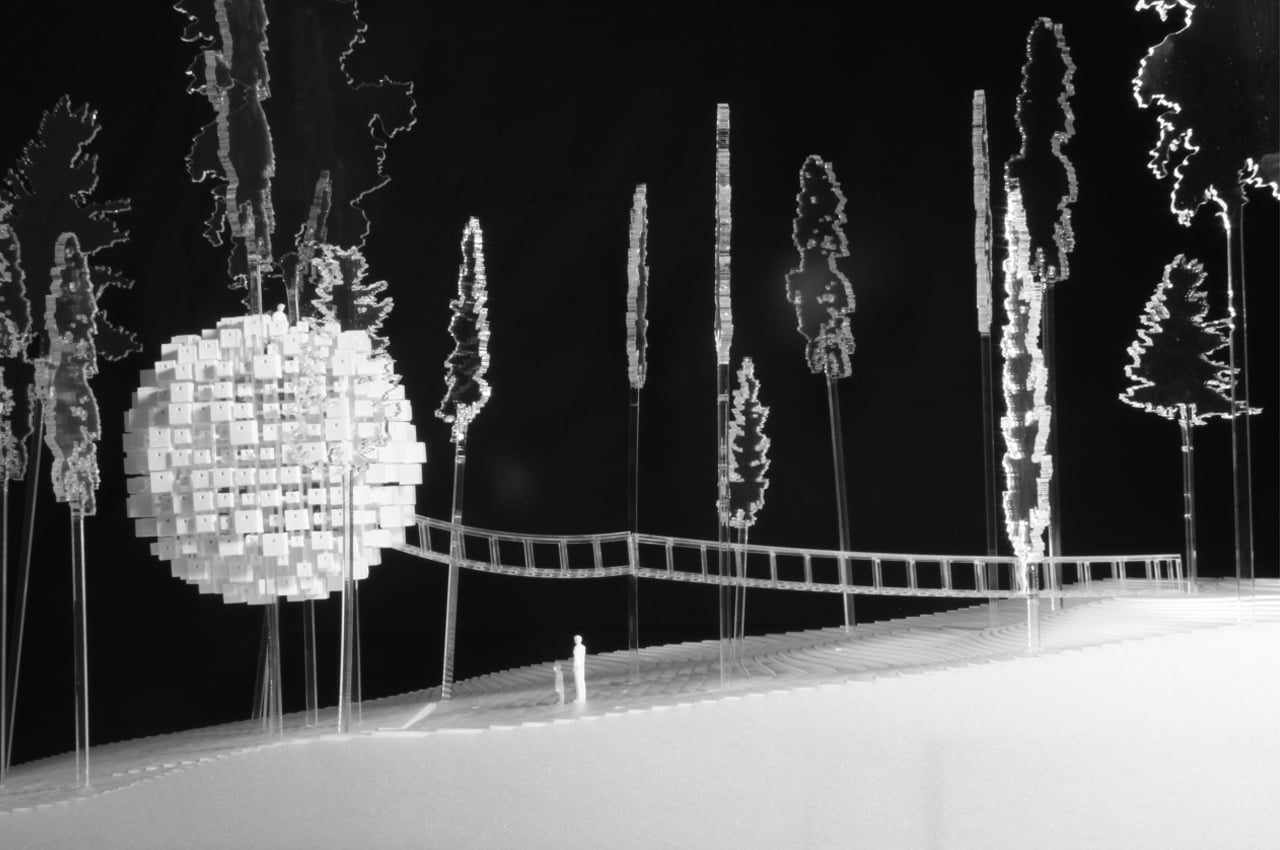
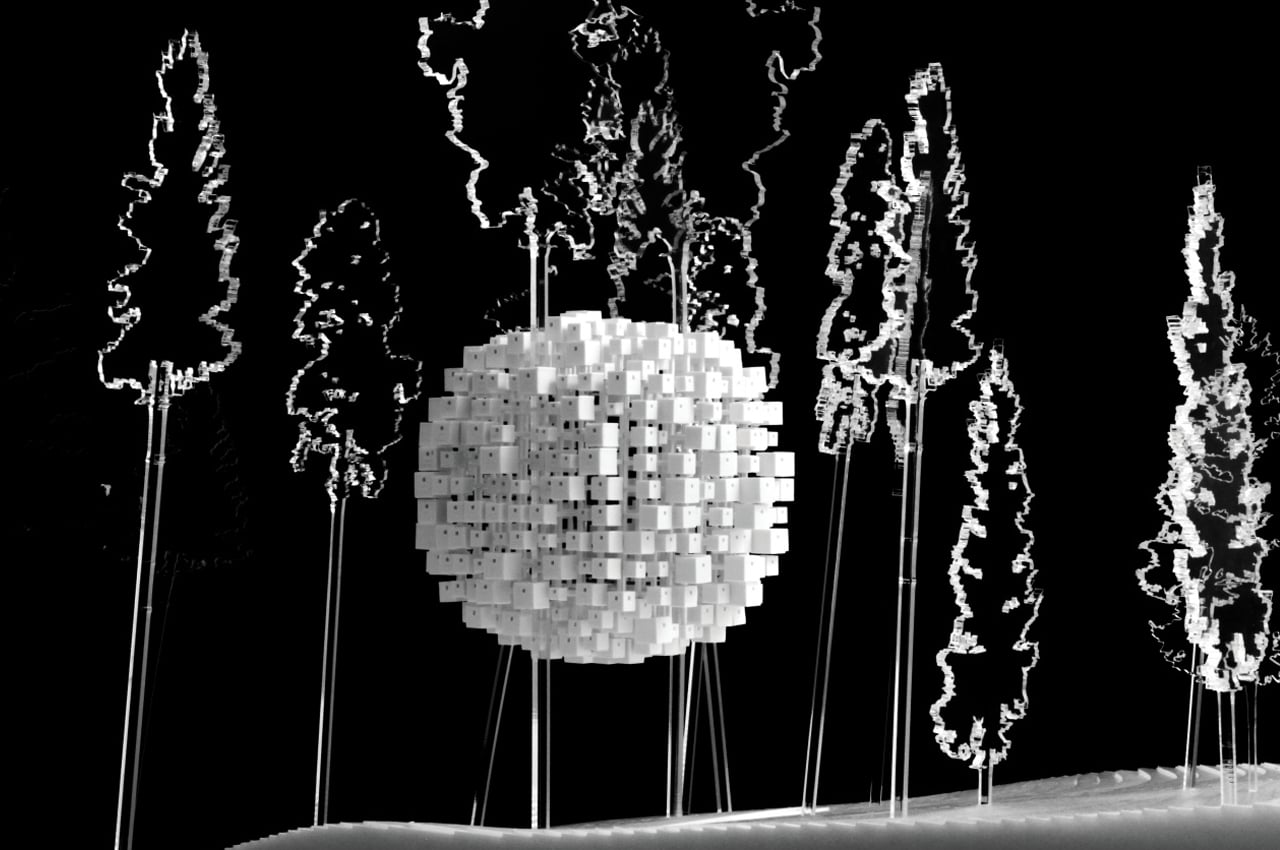
As Öhman notes, “Inventories in Norrbotten county, carried out both by us as ornithologists and by the county administrative board, show that the number of different bird populations is decreasing. Forestry has led to a reduced number of natural holes in trees where breeding birds nest. The installation of bird nests is, therefore, an important measure to take.”
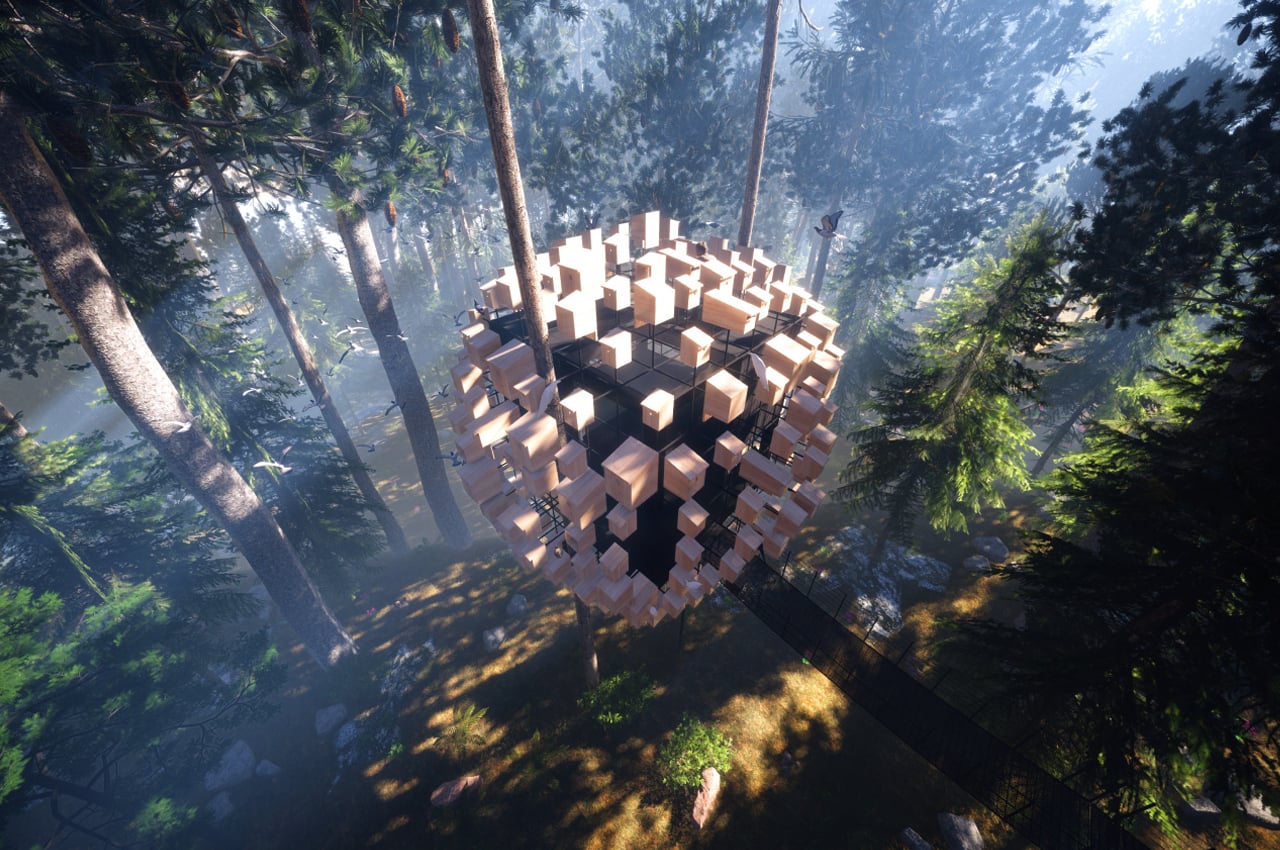
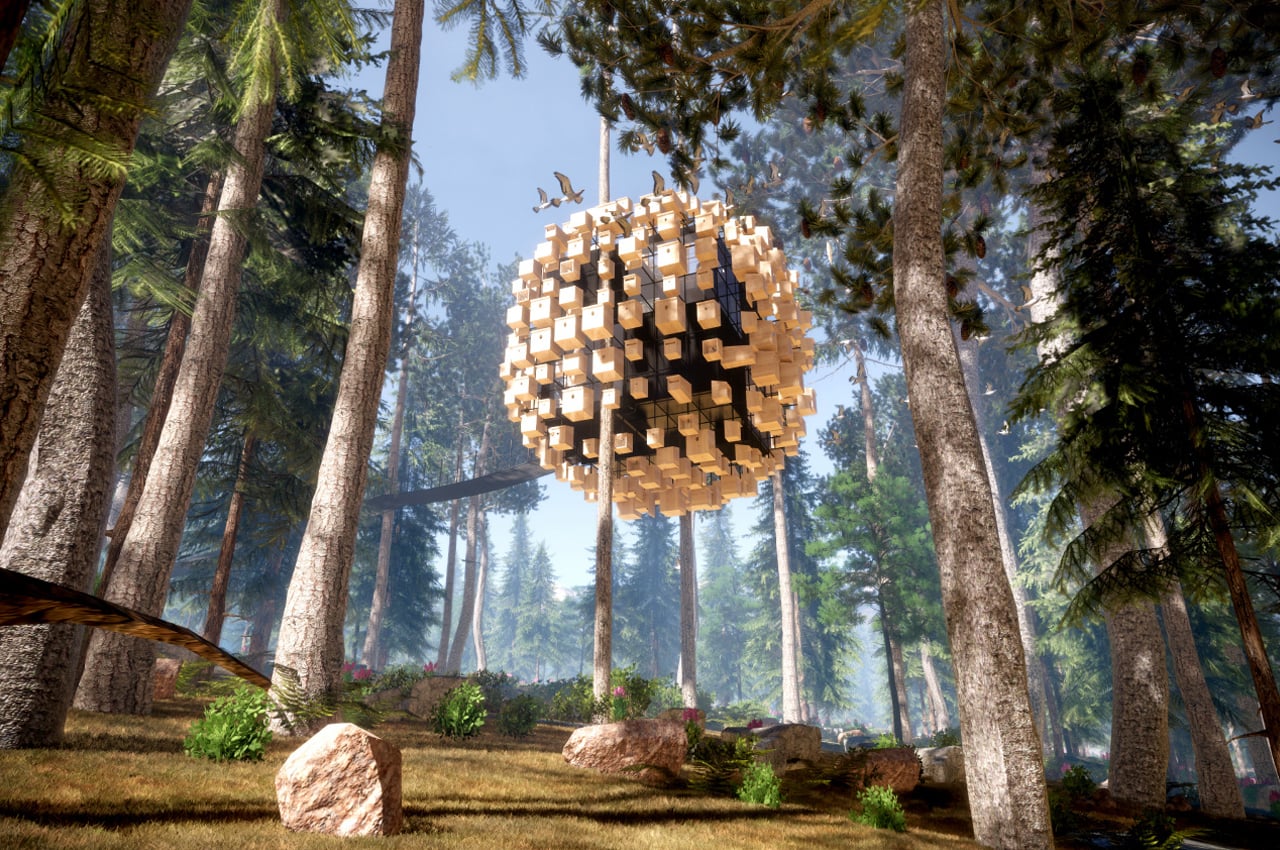
Öhman continues, “Furthermore, climate change leads to the insect boom happening earlier in the year, and by the time the birds’ eggs hatch, the boom has already passed. Feeding is an important support mechanism for the birds that stay in northern Sweden and require food during winter.
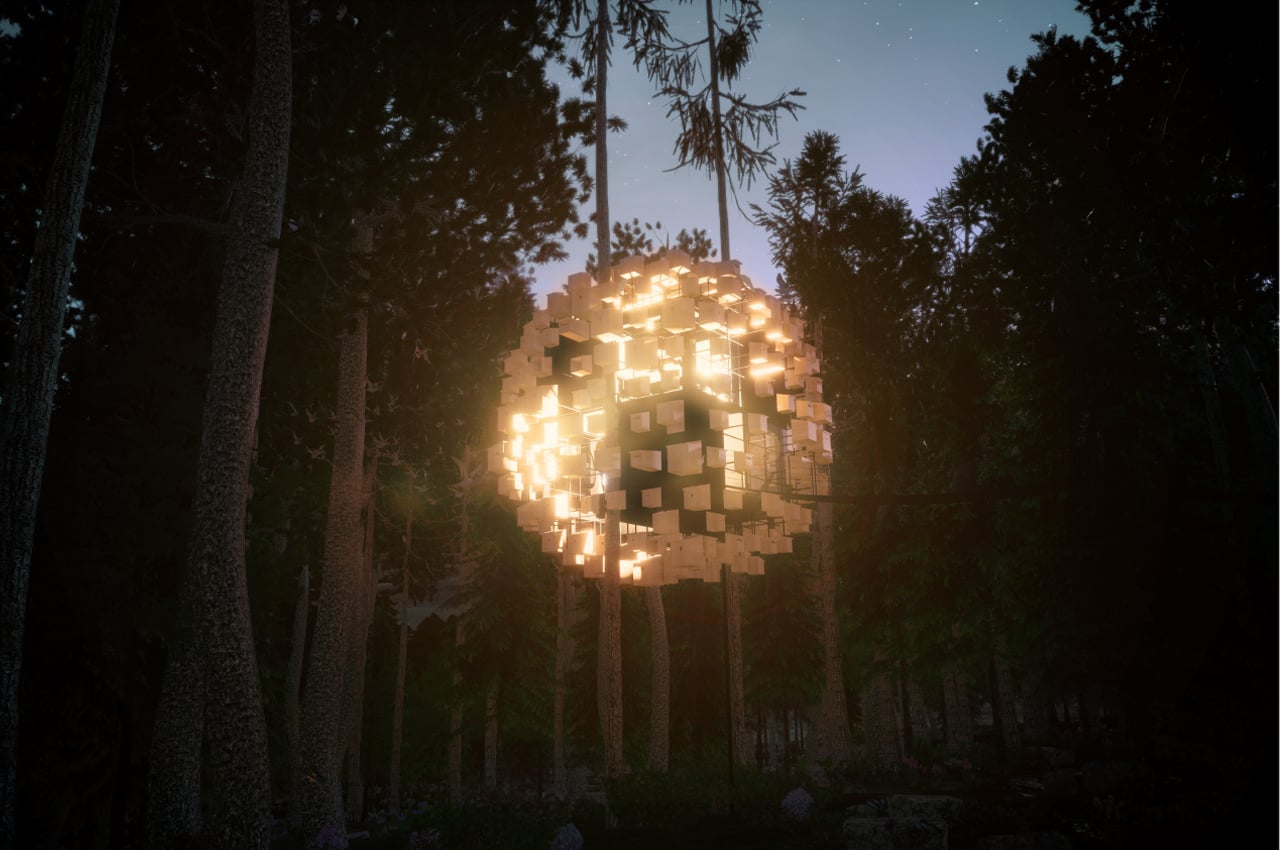
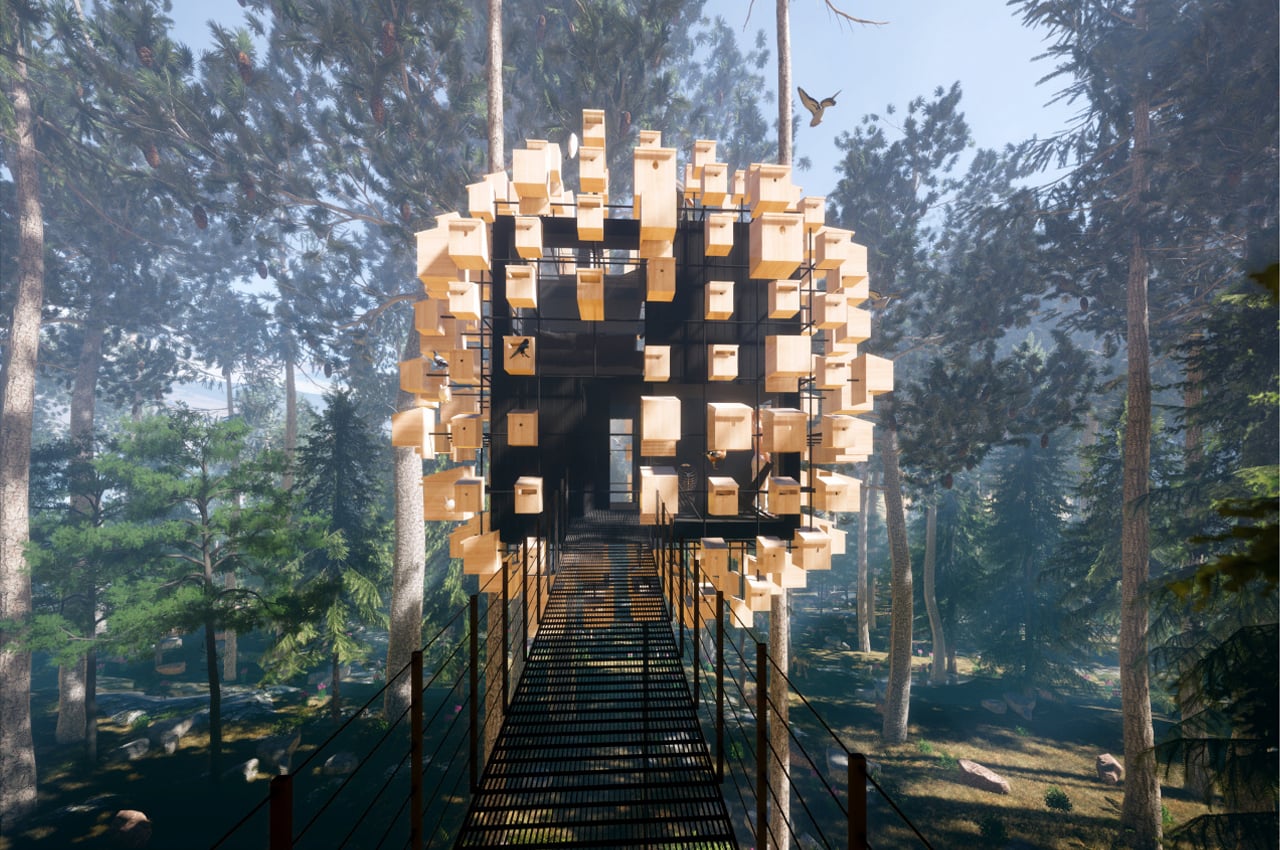
Demonstrating the use of bird nests and feeding, not just at the Treehotel but for people to install near their own homes, is valuable. An initiative from Treehotel to take such measures may inspire their visitors to do the same.”
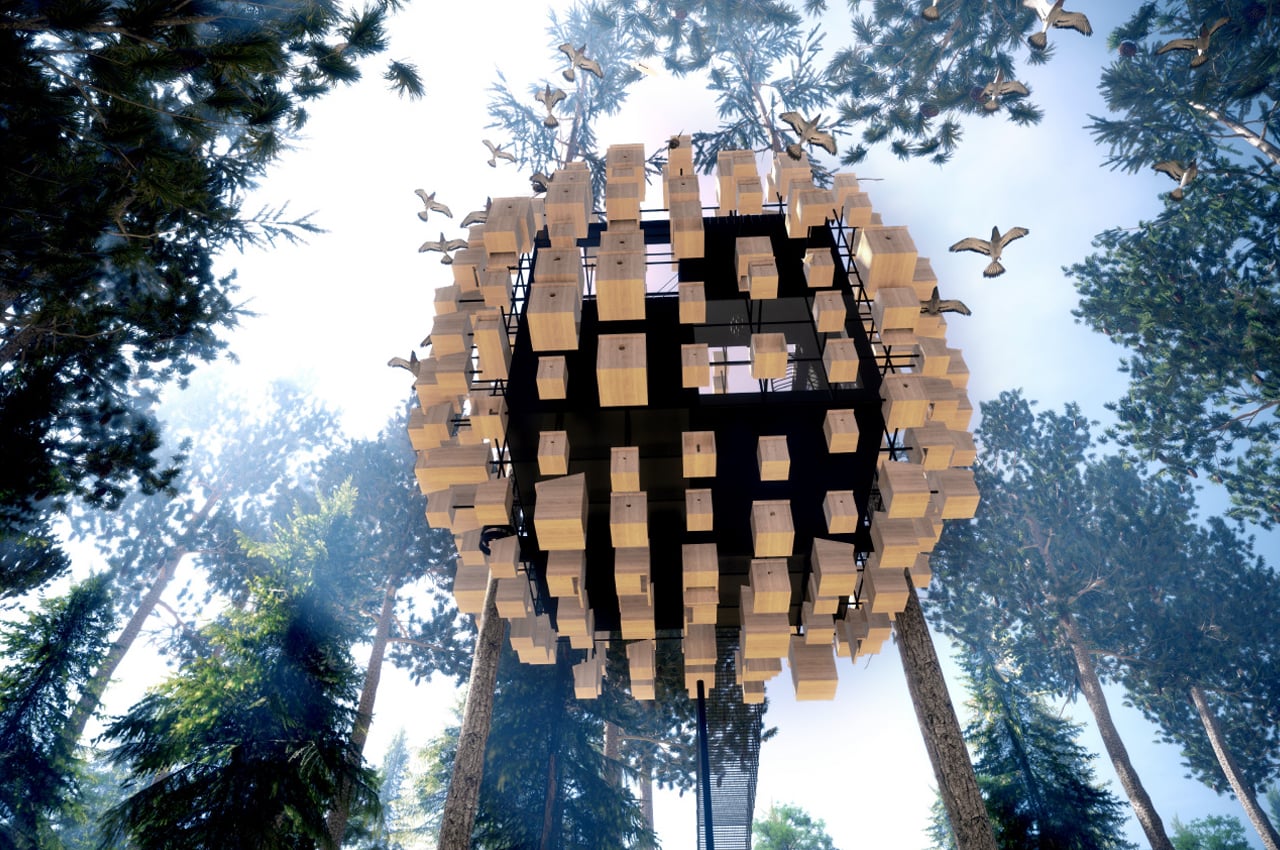
The hotel’s elevational treatment doubles as a bird habitat for the region’s avian population.
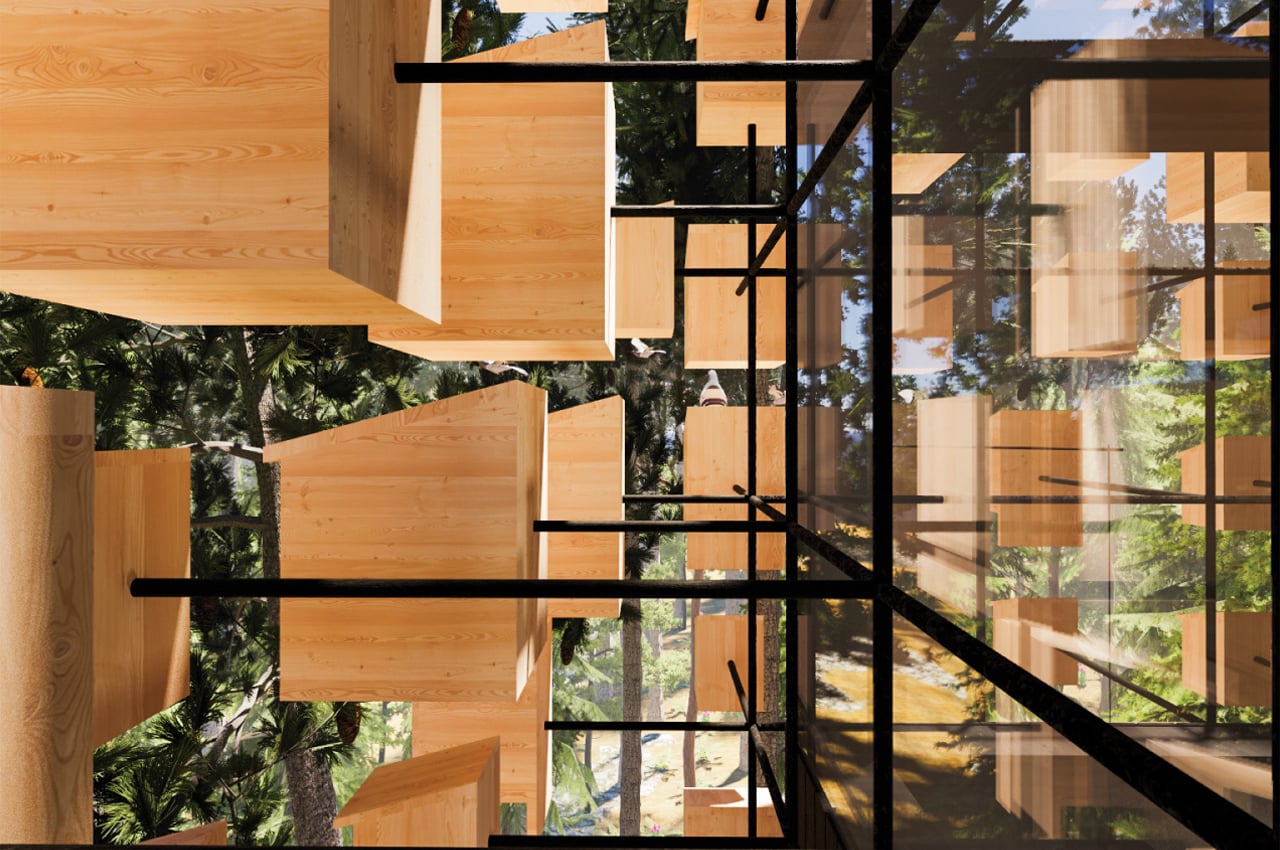
The staggered, multi-shaped configuration of the birdhouses still allows the natural sunlight to come through to each unit.
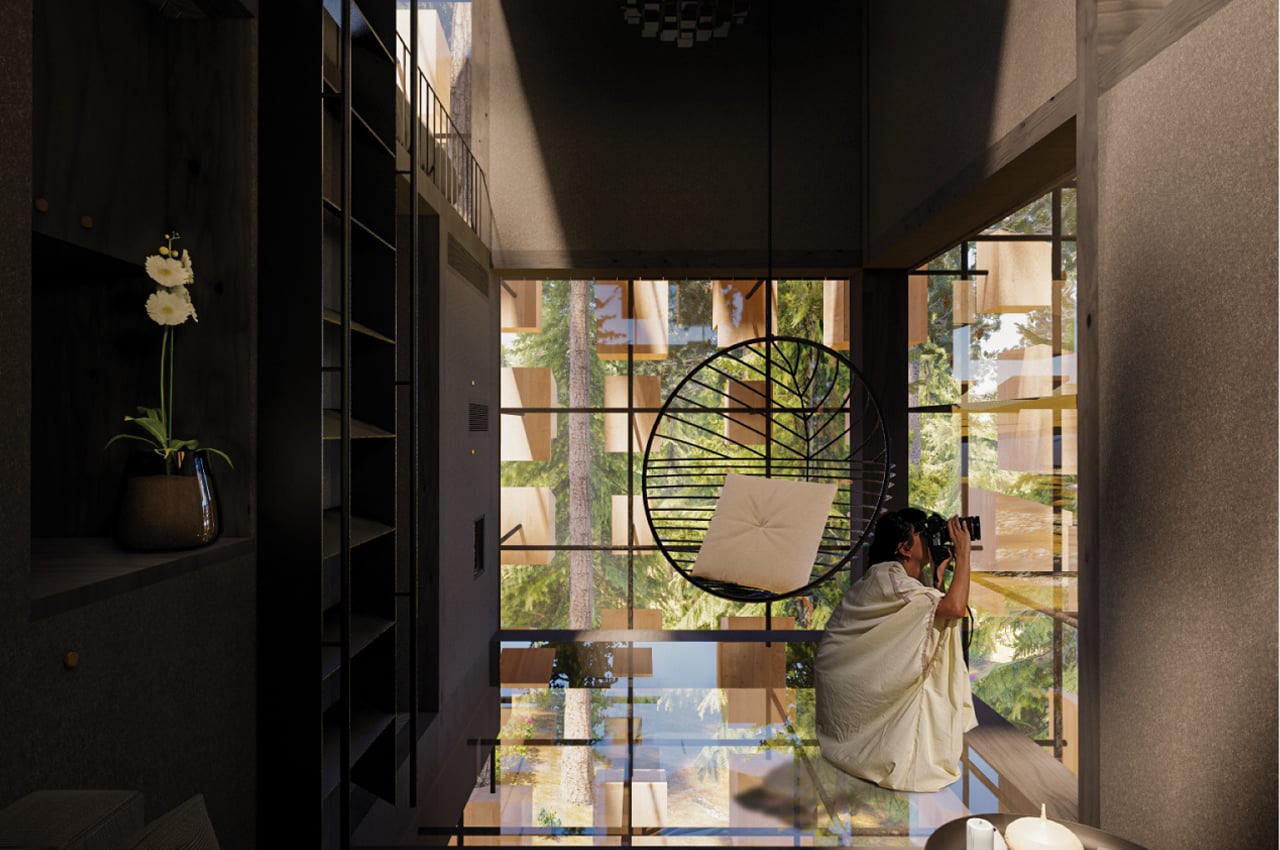
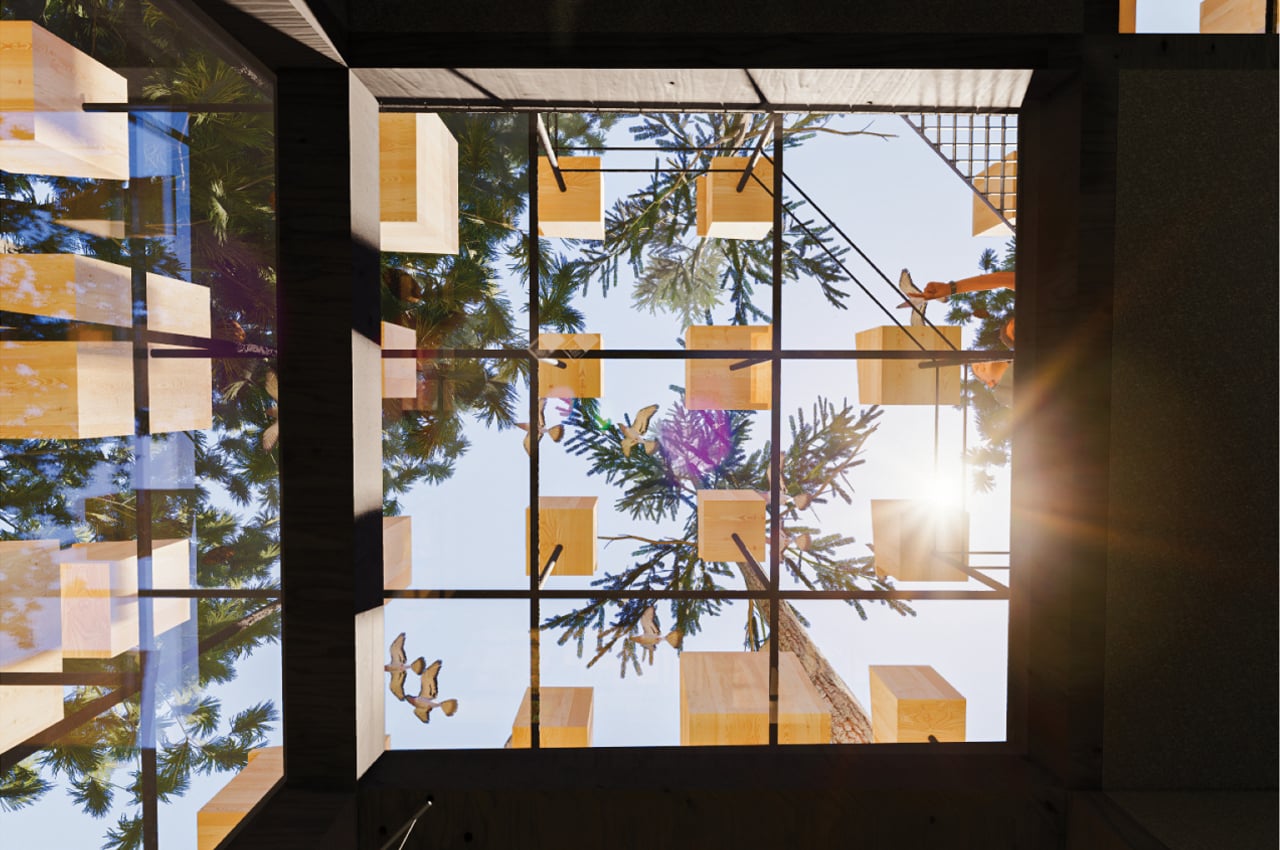
The unit’s glass facades allow pools of sunlight to enter.
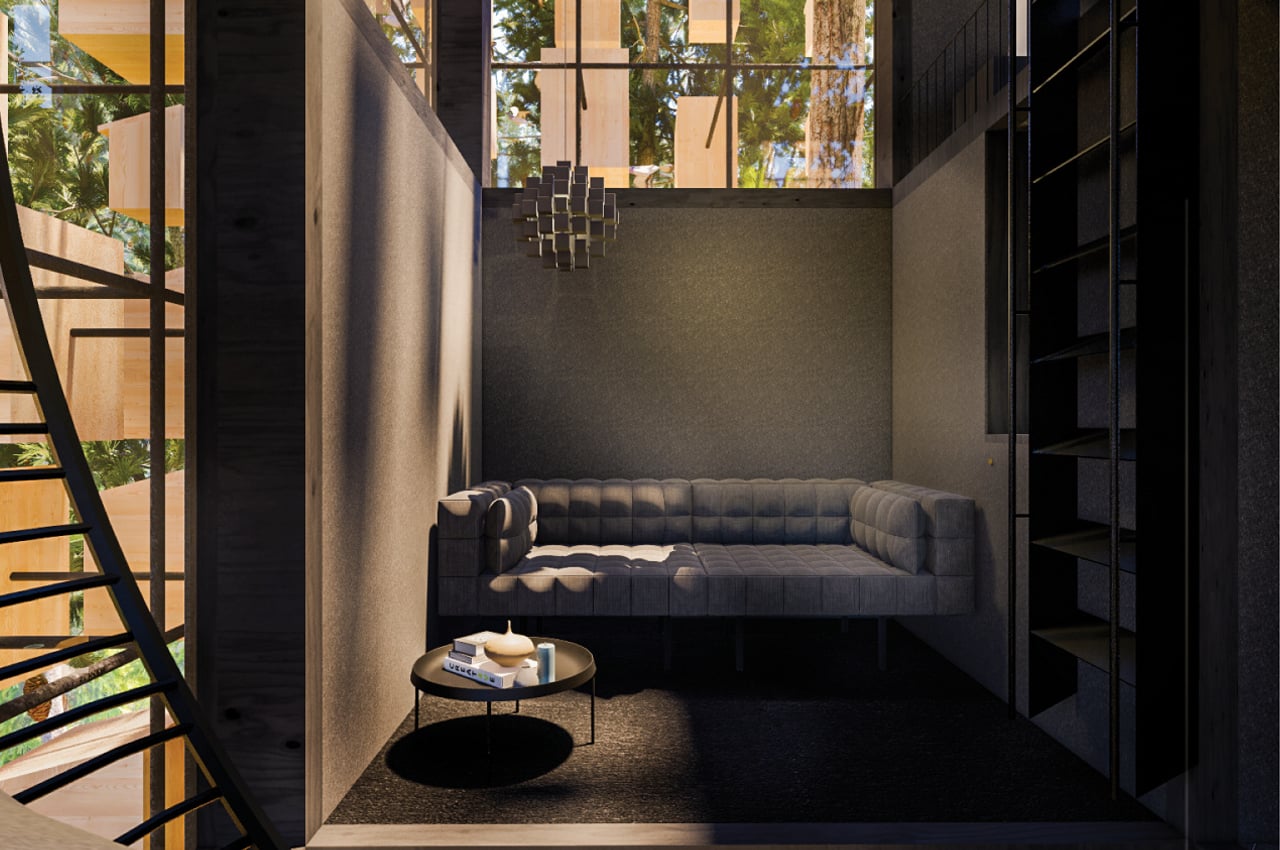
The darker interior elements provide a nestlike quality to the unit.
